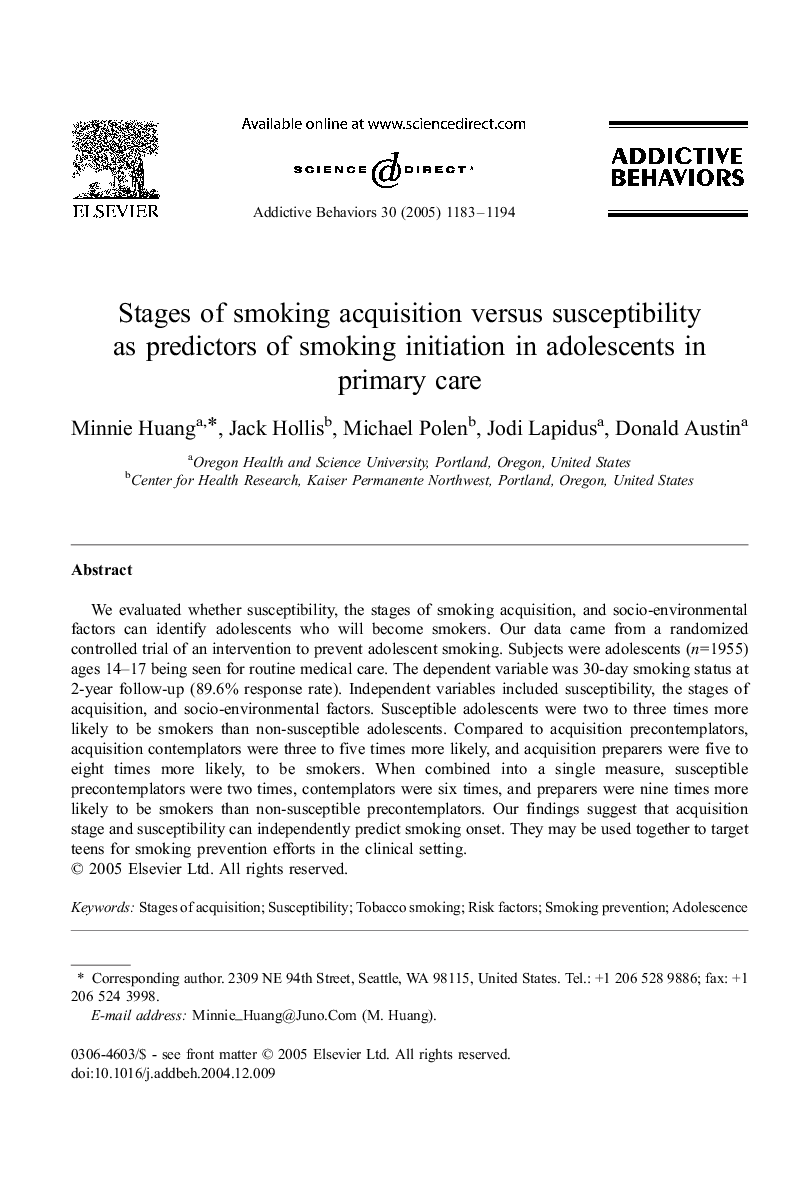| Article ID | Journal | Published Year | Pages | File Type |
|---|---|---|---|---|
| 10443555 | Addictive Behaviors | 2005 | 12 Pages |
Abstract
We evaluated whether susceptibility, the stages of smoking acquisition, and socio-environmental factors can identify adolescents who will become smokers. Our data came from a randomized controlled trial of an intervention to prevent adolescent smoking. Subjects were adolescents (n=1955) ages 14-17 being seen for routine medical care. The dependent variable was 30-day smoking status at 2-year follow-up (89.6% response rate). Independent variables included susceptibility, the stages of acquisition, and socio-environmental factors. Susceptible adolescents were two to three times more likely to be smokers than non-susceptible adolescents. Compared to acquisition precontemplators, acquisition contemplators were three to five times more likely, and acquisition preparers were five to eight times more likely, to be smokers. When combined into a single measure, susceptible precontemplators were two times, contemplators were six times, and preparers were nine times more likely to be smokers than non-susceptible precontemplators. Our findings suggest that acquisition stage and susceptibility can independently predict smoking onset. They may be used together to target teens for smoking prevention efforts in the clinical setting.
Related Topics
Life Sciences
Neuroscience
Behavioral Neuroscience
Authors
Minnie Huang, Jack Hollis, Michael Polen, Jodi Lapidus, Donald Austin,
